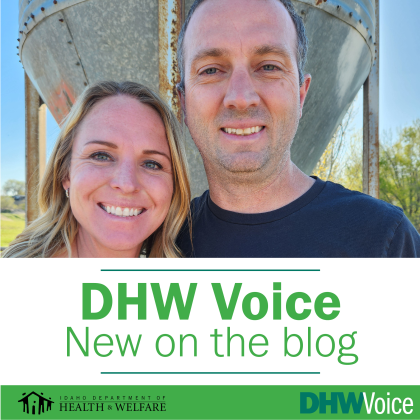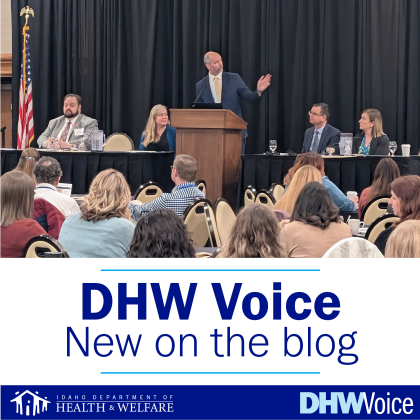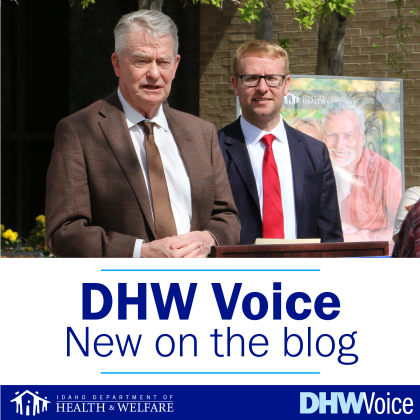Prioritizing Permanency: Reflecting on 250 Adoptions
Over the past year, I’ve pursued a mission of accountability, transparency, fiscal responsibility, and improving the lives of Idaho’s vulnerable children in need.
Central to that has been strengthening child welfare—expanding foster care through legislative reforms that voluntarily extend care to age 23, supporting and strengthening kinship care, and accelerating permanency timelines. We launched the Office of Faith Initiatives, simplified licensing, and eliminated short term rentals as foster placements—while growing licensed foster homes at a record pace.
Idaho has also seen a notable improvement in foster parent recruitment and retention in recent years. The number of foster parents ending their licenses has declined year-over-year since 2023. Meanwhile, we already had 66 more foster families sign up so far in fiscal year 2025 than our previous high in fiscal year 2024.
These improved recruitment and retention numbers signal progress in keeping foster families engaged and supported in their role of helping keep Idaho families together. And taken together, we now have 95 families to care for every 100 foster kids, up from 74 families last June.
The Legislature’s historic $23.2 million investment and addition of 63 new staff singled a major leap forward in prevention and home-based care.
I oversee a wide range of programs that touch every corner of our state and every stage of life.
But few responsibilities have brought me as much personal fulfillment as signing the official documents that finalize a child’s adoption.
Recently, I signed my 250th adoption—each one represents a child’s permanent connection to a loving family and a hopeful future. These are not just names on paper. They are lives transformed, futures rewritten, and families made whole. Every signature is a moment of trust and joy—a quiet but powerful confirmation that a child has found a safe and nurturing place in the world.
Moments like these are a reminder of what we’re all working toward: stability, love, and opportunity for every child in Idaho. They also reflect the tireless commitment of our social workers, case managers, legal teams, foster parents, and most importantly, the adoptive families who open their hearts and homes, giving a chance to a child in need of a loving home.
Behind each of these 250 adoptions are stories of resilience and healing. Many children in foster care have experienced hardship, yet they demonstrate incredible strength and hope. It’s their courage, along with the dedication of those who care for them, that is deeply humbling.
Signing these adoptions is a great honor that affirms the purpose of our work and belief that every child deserves not only a safe home, but a family that celebrates and cherishes them.
To all the families who have welcomed a child through adoption—you are heroes in every sense. Thank you for showing what love, commitment, and community truly mean. Here's to the next 250 lives changed for the better.
Below are more resources for people seeking additional information about adoption in Idaho:
• Information about adoption through foster care: https://healthandwelfare.idaho.gov/services-programs/children-families-older-adults/child-and-family-services-and-foster-care/about-3
• Private adoption information: https://healthandwelfare.idaho.gov/services-programs/children-families/child-and-family-services-and-foster-care/private-adoption
• Adoption and guardianship assistance: https://healthandwelfare.idaho.gov/services-programs/children-families/child-and-family-services-and-foster-care/adoption-and
Photo caption: DHW Director Alex J. Adams signing adoption #250 on June 20th.
The Idaho Department of Health and Welfare is dedicated to strengthening the health, safety, and independence of Idahoans. Learn more at healthandwelfare.idaho.gov.










Join the Discussion
Please note the following terms of participation in commenting on the DHW Voice blog.
To ensure a productive discussion you agree to post only comments directly related to this post and to refrain from posting obscenities; threatening, abusive or discriminatory language; sexually explicit material; and other material that would violate the law if published here; promotional content; or private information such as phone numbers or addresses. DHW reserves the right to screen and remove inappropriate comments.